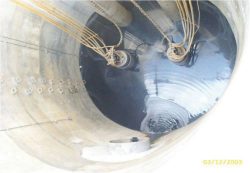Pump Station Types – Wet Wells Vs Dry Wells
 Pump Station Types – Wet Wells Vs Dry Wells
Pump Station Types – Wet Wells Vs Dry Wells
Dry wells and wet wells are two of the most common pumping station types. And while they both play critical roles in sewage collection networks, they are different in a number of ways.
Wet Well
Almost all wastewater pump stations have a wet well (also called a sump well). This underground pit collects sewage from the incoming sewer and pumps it to a gravity manhole where it is transported to the treatment plant. However, wet wells are notorious for clogging with wipes and other debris that can be difficult to remove. This is why it is crucial to keep your grinder pumps running & the level control system clear of debris so that they can do their job effectively.
Dry Well
In dry well pumping stations, sewage flows into a collector and then passes through a dividing chamber with a self-cleaning separator of coarse solids before entering the retention module. In traditional sewage pumping stations, pumps and pipework are installed in a dry well which also houses electrical and control equipment. This configuration enables safe entry and operation / maintenance of pumps and pipework. Some authorities prefer dry well installations over wet wells for large, very deep and/or critical pumping stations as they can provide easier access to pumps for condition monitoring, inspection and in-situ maintenance. This option also protects electrical equipment from flooding.
Safety & Maintenance
Wet wells are typically found at sewage pump stations and are the places where sewage is collected, stored and lifted through the sewer system. They are also the most hazardous areas. Sewage containing dangerous chemicals such as methane and hydrogen sulfide can build up inside of a wet well. If a person enters a wet well without the proper confined space entry method, they can become seriously ill. A dry well, on the other hand, is a separate part of a pump station that houses electrical and control equipment. This type of pumping station is less dangerous because it doesn’t directly expose a person to the sewer atmosphere.
Performing routine maintenance on wet wells and lift stations reduces the risk of sanitary sewer overflow (SSO), which can have serious consequences for the environment, residents and the surrounding community. By tracking run times, monitoring pressure, keeping floats and check valves clean, and conducting visual inspections of the site, operators can improve reliability and minimize the risk of a wet well or lift station overflowing into a wastewater treatment plant.
Categorised in: Pump Stations

 Pump Station Types – Wet Wells Vs Dry Wells
Pump Station Types – Wet Wells Vs Dry Wells